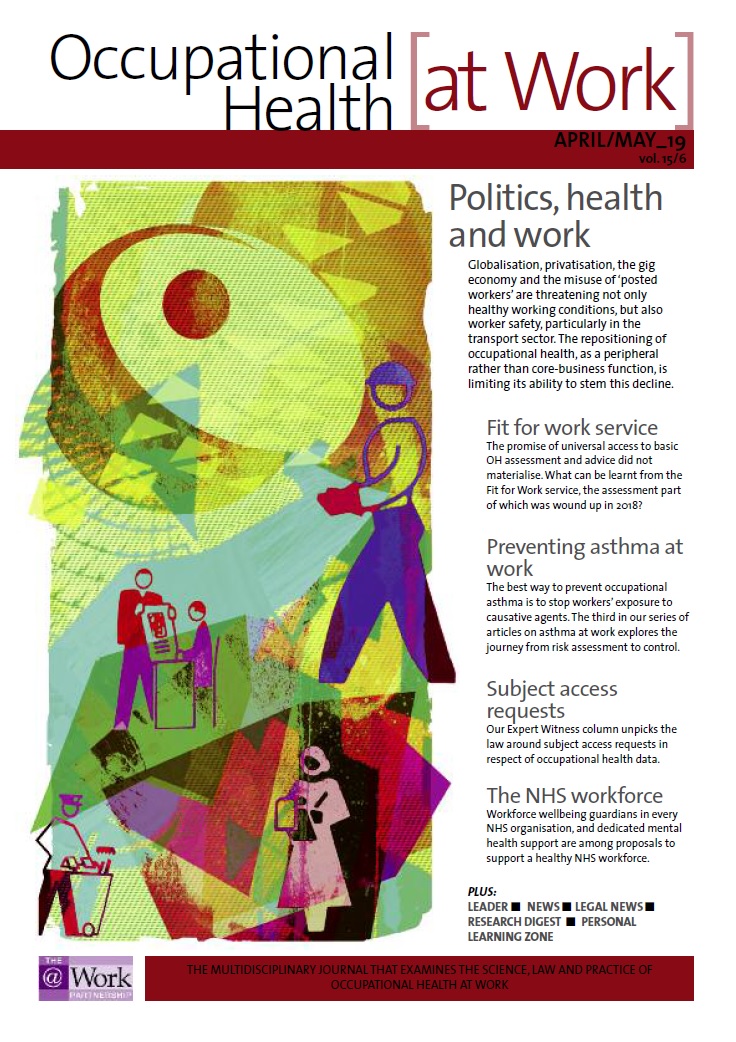April/May 2019 (vol. 15/6)
ContentsFeaturesNewsLegal
NewsResearch DigestResearch PlusCPD
 Asthma at work, part 3
Asthma at work, part 3
Part 3: good occupational hygiene – the pathway to prevention
Summary:
We would like to thank the HSE for making this article open access. To read this article in full, please click on this link.
In the third in a series of articles on asthma at work, Vince Sandys and Chris Keen explain how sound occupational hygiene principles can prevent or reduce exposure to hazardous agents to as low as reasonably practicable.
Occupational asthma is a serious and potentially irreversible condition that can have life-changing effects. There are many chemicals and products that can cause asthma, as well as process-generated airborne hazards where the risk of developing asthma resulting from exposure is often not fully appreciated – flour and wood dust are notable examples. Figure 1 shows the top seven substances reported between 2015 and 2017 as causing asthma at work1,2 and illustrates the point that – with the exception of isocyanates – most are not materials that are widely perceived to be harmful…
Vince Sandys is an occupational hygienist at the HSE’s Health and Safety Laboratory.
Chris Keen is a chartered occupational hygienist at the HSE’s Health and Safety Laboratory.
Author: Sandys V, Keen C
Occupational Health at Work April/May 2019 (vol. 15/6) pp29-34



